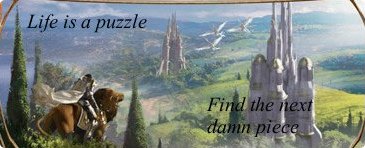Question answering time for a STAC movie! After watching "Let the Right one In" I felt almost numbed. The simplicity and beauty of the film simply blew me away. The final shot of Oskar on the train made we wanted to cry tears of joy. An interesting point was how the backstory was handled. Not much was givin but rather suggested by the way characters interacted. The way the father and the creeper interacted suggested what had happened to the marriage of Oskar's parents and why the mother got to keep Oskar. The scrapbook of murders suggests how tortured Oskar had been throughout the years. Another cool thing is camera movement. The Camera is not moving unless the shot is a close up on a specific character, and even when it does, it is a slow following, keeping the character in focus for the entirety of the shot. The also brings up the question of camera distance. Large distances are used frequently. I think this was to display a bit of a panoramic idea, like a full view, pulling in the viewer to me more, more like an observer. I felt tugged in by the use of the distance. Also, shots could get very close, making it fell like my own point of view.
Characters are not solely developed by dialogue. Much is in how the look at each other. Eli looks longingly at Oskar, as if she misses being like him, a young boy, not a vampire who must feed to stay alive. The father looks at the son in a similar way, but it's a longing look of companionship. It tells me that he misses being a full time father of his son. Eyes, to me, revealed so much more than just that Eli was a vampire in this movie. Sound was also heavily used. Sharp sounds were used at times of fear, which tied together the anxiety and the choice missing images to create a whole sense of fear within the viewer. Not only are harsh sounds used but soft orchestral music was also used during times of intimacy to show the romance in the air. Often these are the scenes where Eli and Oskar are alone and close in proximity.
Hakan, I suppose, was the man who posed as Eli's father. I do not understand his devotion to Eli, or did not until I saw how strongly Oskar felt. It to me, is almost mimicing the affection toward Eli of Hakan. This leads me to believe that Hakan was once in Oskar's possition. Falling in love with Eli and running off to help her feed so that they can remain together, although I do not really want to believe Eli could be so cruel. He was so sweet during the scene with the rubix cube. I feel like this puzzle was representative of Eli's ability to reveal herself to Oskar. When she solved it for him, hw also showed him how to do it, which to me made sense in that slowly after she was revealing himself to Oskar. The cube itself, I suppose, the puzzle, was Eli.
Plot points for me were not the easiest thing to pick out. There were a lot of important things that happened over the course of the movie and a lot happened within the timeframes in which the plot points should be revealed. I had come to the relative conclusion that the first plot point was when Oskar signs up for the strength building class. From here he has decided not to deal with the3 bullies anymore. Oskar had been a changed person. The second point, although late in the movie, I felt was when Oskar prevents Eli's death at the hand of a vengedful man. At this point it was as if Eli was indebted to Oskar and owes him her life. He saved her after all of the disturbing things that Eli revieled.
The ending to me, definately was a happy ending. The two were running away together. They both overcame difficulties and hinderances to wind up together in the end. The both, I assume, stay together. To me the ending is sweet and showing so much devotion in their unorthodox love that it's practically tear jerking.
I loved this movie. Period. The End.
Subscribe to:
Post Comments (Atom)


"Komme in." That's how you say "Come In" in Swedish.
ReplyDelete